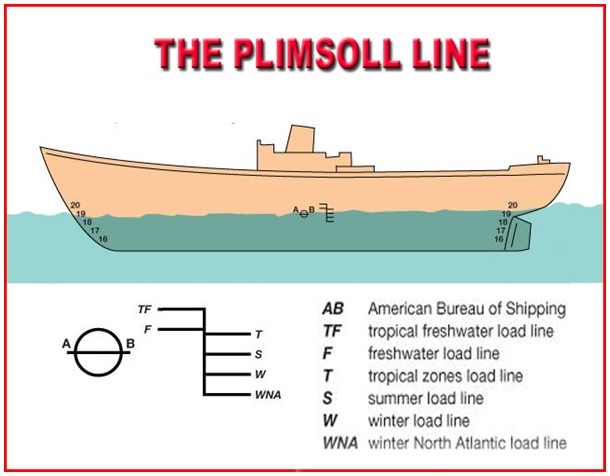PURPOSE OF LOADLINE
The purpose of the load line is to ensure that a ship has sufficient freeboard (the height from the waterline to the main deck) and thus sufficient reserve buoyancy (volume of ship above the waterline). It should also ensure adequate stability and avoid excessive stress on the ship’s hull as a result of overloading. Ships intended for the carriage of timber deck cargo are assigned a smaller freeboard as the deck cargo provides protection against the impact of waves.
The exact location of the load line markings is calculated and/or verified by a classification society, which then issues a load line certificate.
The first international convention on load lines was adopted in 1930. It was based on the principle of reserve buoyancy. In 1966 the IMO adopted a new convention, determining the freeboard of ships by subdivision and damage stability calculations. The International Convention on Load Lines 1966 applies to all vessels engaged in international trade and determines the permitted draft/freeboard for a vessel in different climate zones and seasons, which are defined in a special international load line zones and areas map.

The various markings on the images have the following meaning.

Hi,
what are FT and AT stand for in freeboard calculation?
Why loadline mark both side is given what was the reason
Because a ship can go either side alongside . Visual readings are required by mates loading vessel to its max respective loadine and for inspectors to ascertain whether a ship is overloaded or not .
because ship can list to any side during cargo operations & appropriate reading will not be possible then.
What is loadline zone??
LL zone are particular area which falls under load line….. Zone can be seen in routing charts .,..